Introduction aux graphiques et sous-graphiques relationnels
Introduction à la visualisation de données avec Seaborn

Erin Case
Data Scientist
Questions sur les variables quantitatives
Graphiques relationnels
- Taille vs poids
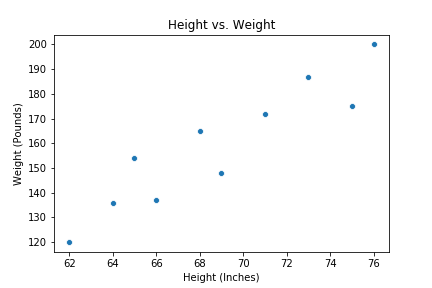
Questions sur les variables quantitatives
Graphiques relationnels
- Taille et poids
- Nombre d'absences à l'école par rapport à la note finale
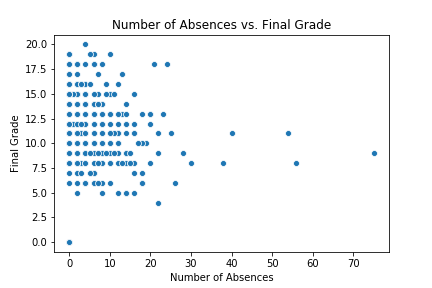
Questions sur les variables quantitatives
Graphiques relationnels
- Taille et poids
- Nombre d'absences à l'école par rapport à la note finale
- PIB vs. pourcentage d'alphabétisation
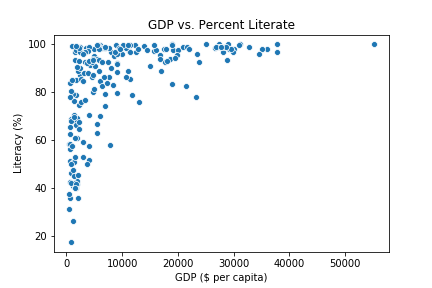
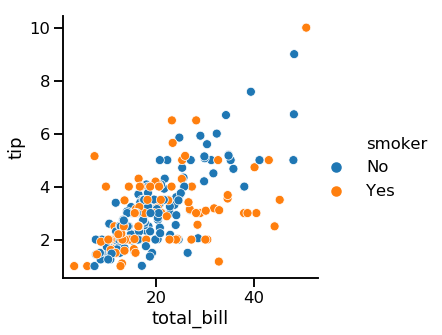
1 Waskom, M. L. (2021). seaborn : visualisation de données statistiques. https://seaborn.pydata.org/
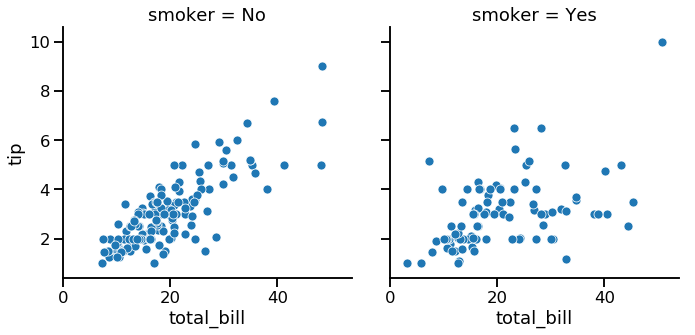
1 Waskom, M. L. (2021). seaborn : visualisation de données statistiques. https://seaborn.pydata.org/
Introduction de relplot()
- Création de « graphiques relationnels » : diagrammes de dispersion ou diagrammes linéaires.
Pourquoi utiliser relplot() au lieu de scatterplot() ?
relplot()vous permet de créer des sous-graphes dans une seule figure
scatterplot() vs. relplot()
Utilisation de scatterplot()
import seaborn as sns
import matplotlib.pyplot as plt
sns.scatterplot(x="total_bill",
y="tip",
data=tips)
plt.show()
Utilisation de relplot()
import seaborn as sns
import matplotlib.pyplot as plt
sns.relplot(x="total_bill",
y="tip",
data=tips,
kind="scatter")
plt.show()
1 Waskom, M. L. (2021). seaborn : visualisation de données statistiques. https://seaborn.pydata.org/
Sous-graphes en colonnes
import seaborn as sns import matplotlib.pyplot as plt sns.relplot(x="total_bill", y="tip", data=tips, kind="scatter", col="smoker")plt.show()

1 Waskom, M. L. (2021). seaborn : visualisation de données statistiques. https://seaborn.pydata.org/
Sous-graphes en lignes
import seaborn as sns import matplotlib.pyplot as plt sns.relplot(x="total_bill", y="tip", data=tips, kind="scatter", row="smoker")plt.show()
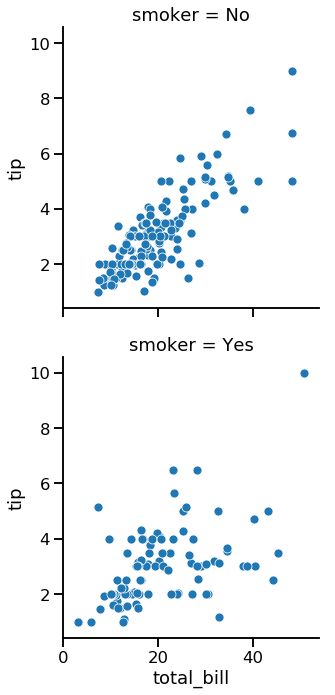
1 Waskom, M. L. (2021). seaborn : visualisation de données statistiques. https://seaborn.pydata.org/
Sous-graphes en lignes et en colonnes
import seaborn as sns import matplotlib.pyplot as plt sns.relplot(x="total_bill", y="tip", data=tips, kind="scatter", col="smoker", row="time")plt.show()
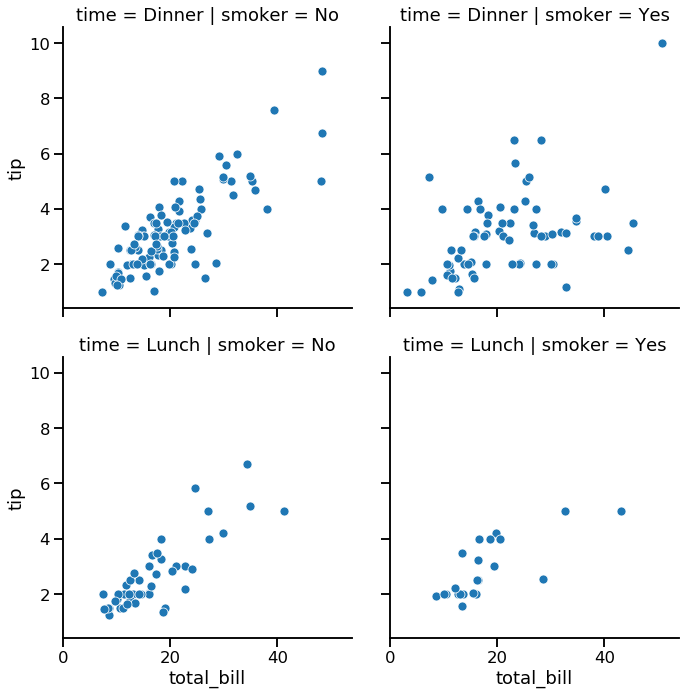
1 Waskom, M. L. (2021). seaborn : visualisation de données statistiques. https://seaborn.pydata.org/
Sous-groupes pour les jours de la semaine

1 Waskom, M. L. (2021). seaborn : visualisation de données statistiques. https://seaborn.pydata.org/
Colonnes enveloppantes
import seaborn as sns import matplotlib.pyplot as plt sns.relplot(x="total_bill", y="tip", data=tips, kind="scatter", col="day", col_wrap=2)plt.show()
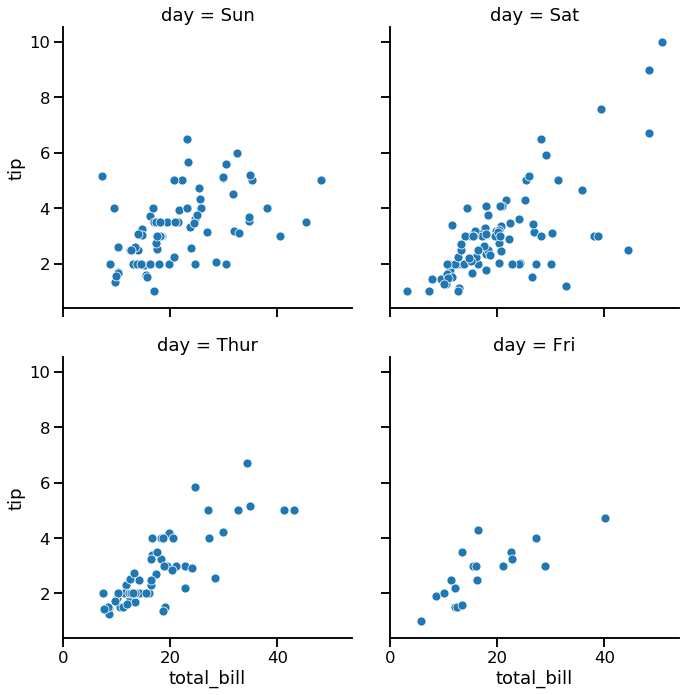
1 Waskom, M. L. (2021). seaborn : visualisation de données statistiques. https://seaborn.pydata.org/
Organisation des colonnes
import seaborn as sns import matplotlib.pyplot as plt sns.relplot(x="total_bill", y="tip", data=tips, kind="scatter", col="day", col_wrap=2, col_order=["Thur", "Fri", "Sat", "Sun"])plt.show()
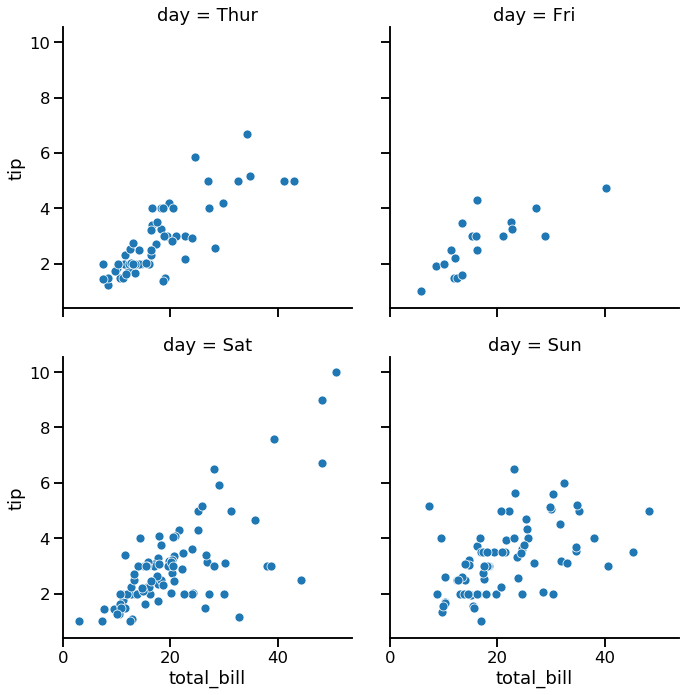
1 Waskom, M. L. (2021). seaborn : visualisation de données statistiques. https://seaborn.pydata.org/
Passons à la pratique !
Introduction à la visualisation de données avec Seaborn

